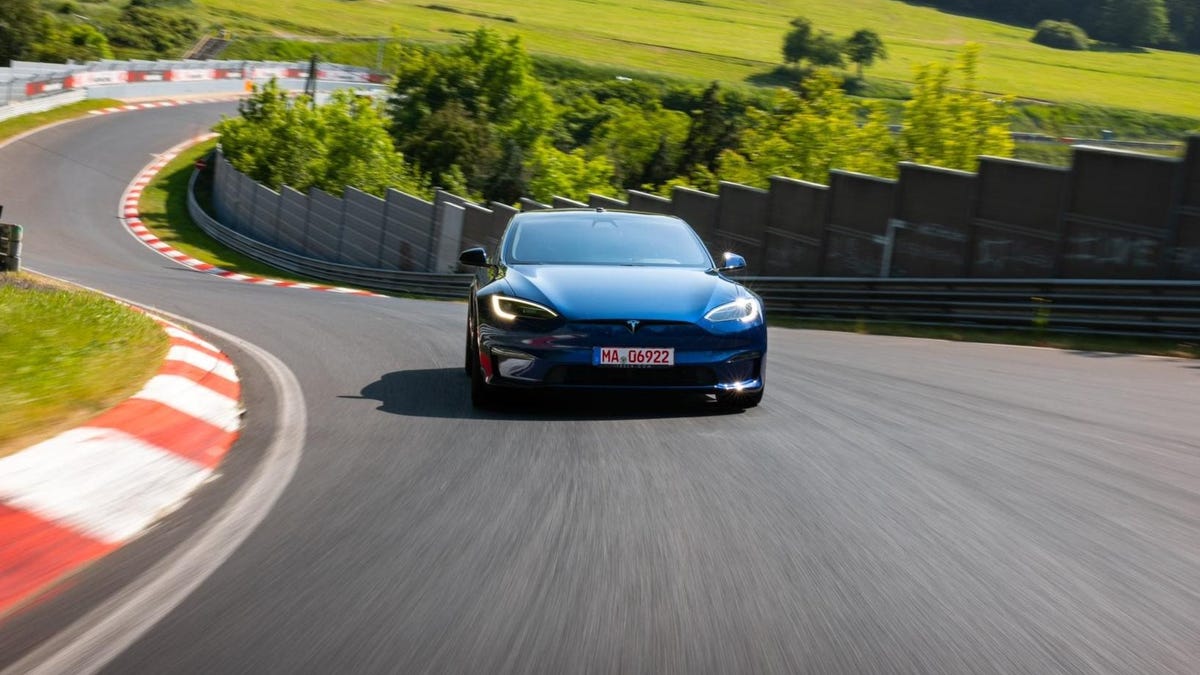If you’ve never driven a Tesla before, it’s something of an immediately alien experience. The tip-in acceleration isn’t like any gasoline-powered car on the market, because it doesn’t need to ramp up. If you stomp on the throttle in an EV, it goes right when you tell it to go. Quicker acceleration is a major selling point, but if you aren’t prepared for it, it can cause a car to get away from you pretty quickly. That’s especially the case if, you know, you’re only borrowing the car for a few days.
Recently the news has been overrun by reports of Hertz dumping its stock of Tesla rental cars, or Sixt doing the same thing over in Europe. The anti-EV crowd is spending its time lately crowing about comeuppance and woke or whatever, but the reality is drivers weren’t used to driving a Tesla, and many of them crashed. Because these cars are heavier and quicker than the gas cars many American drivers are used to, a heavy throttle foot means that rental car is hitting the wall, pedestrian, or other cars much faster and harder than a gas car. That gets expensive quickly.
Researchers at LexisNexis Risk Solutions found insurance data tends to corroborate Hertz’ claims. Rental drivers aren’t the only ones having trouble keeping their Teslas from hitting things. When drivers switch from gasoline-powered cars to electric cars, they tend to crash more.
Here’s more from CNN Business:
“The frequency of insurance claims rises by about 14.3 percent while the severity of claims, or the amount that has to be paid out, increases by 14.5 percent, according to the data.”
“Crashes are even more frequent in households with both a gas and an electric model, indicating that regularly switching from one to another exacerbates the issues. And the fact that crash frequency lessens with time also suggests that unfamiliarity has something to do with it, said Xiaohui Lu, head of EV research at LexisNexis Risk Solutions.”
Your propensity to crash when switching to EV is highest in the first year, tapering off as you become accustomed to your new vehicle. This new-vehicle crash statistic is pretty common when you buy any different vehicle, but it’s especially stark when jumping into an EV.
For the purposes of this study, Tesla was far and away the highest represented electric vehicle. More than 80 percent of Hertz’ electric vehicle stock was supplied by Tesla, and the company is still the most popular EV brand in the U.S. The next most popular, Chevrolet’s Bolt, doesn’t have quite the rapid acceleration as even an entry-level Tesla does.
Once again, from CNN Business:
In the insurance business, there is a long-established connection between horsepower and the frequency and amount of insurance claims. Fast cars hit things more often and they hit them harder, leading to more – and more severe – crashes. Added to this, EVs lack the usual engine sounds that go along with rapid acceleration and high speeds, so it’s conceivable drivers are less aware of how fast they’re going.
Besides their added speed, EVs are also heavier than gas-powered vehicles because of their large, dense battery packs. That also leads to more damage in the vehicles the EV hits resulting in higher insurance claims.
So you’re much more likely to hit shit, and when you do, you hit it harder. That checks out. No wonder Hertz is dropping Tesla like a bad habit.

